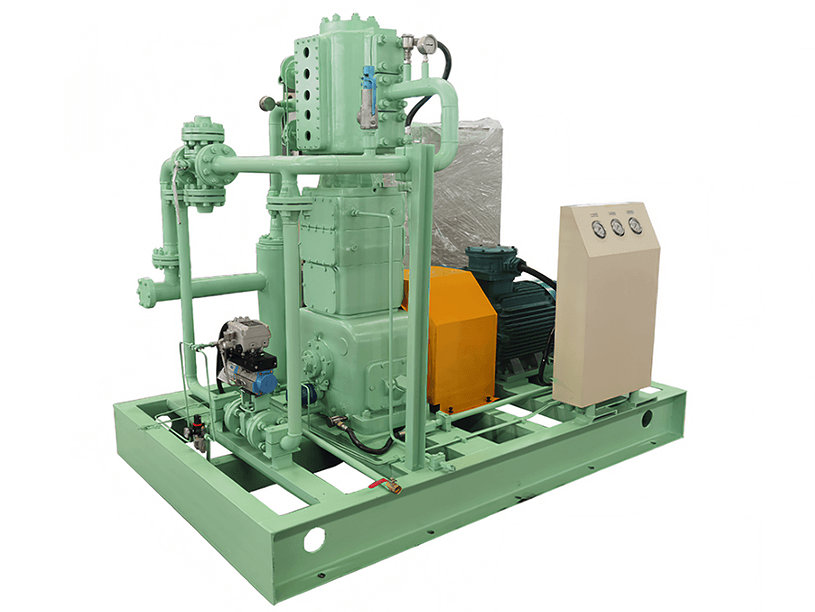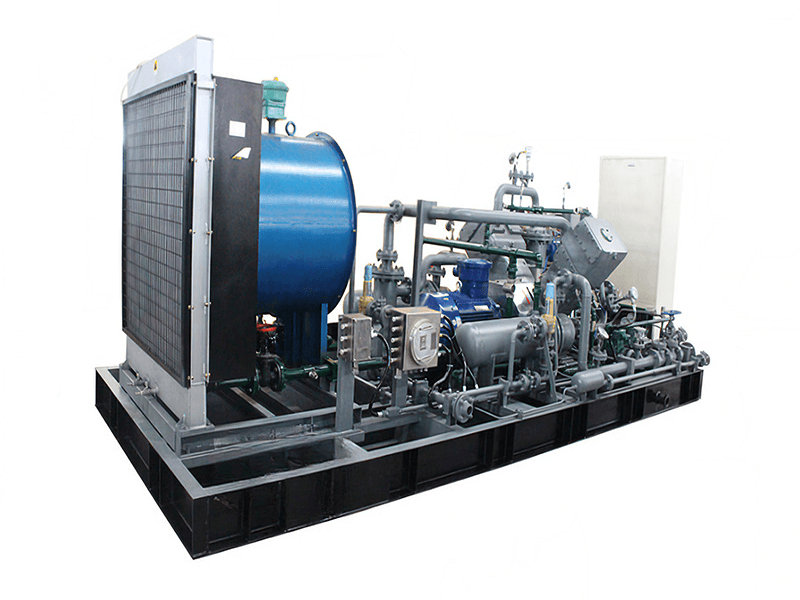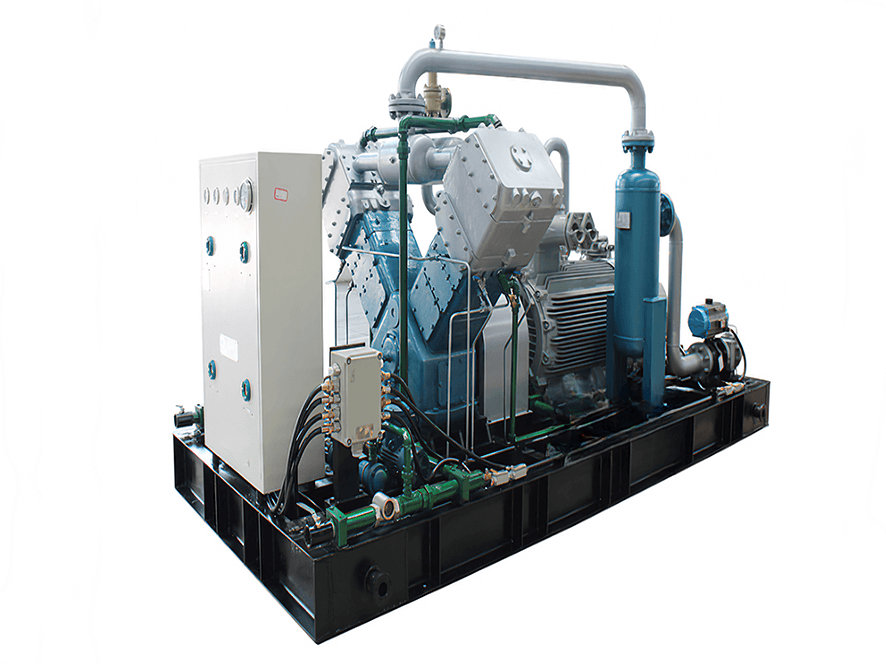The cooling system of a natural gas compressor is designed to manage and dissipate the heat generated during the compression process. The specific cooling system used can vary depending on the compressor type, size, operating conditions, and application requirements. Natural gas compressors generate heat during the compression process, and cooling methods are employed to manage and dissipate this heat.

Here are several cooling methods commonly used for natural gas compressors:
1. Air Cooling: Air cooling is a simple and widely used method for cooling natural gas compressors. It involves the use of air as a cooling medium to remove heat from the compressor. Air-cooled compressors typically have cooling fins or radiators that increase the surface area for heat dissipation. The ambient air flowing over these surfaces carries away the heat, cooling the compressor.
Advantages:
- Simple and cost-effective method.
- No need for additional water supply or cooling infrastructure.
- Suitable for remote locations or areas with limited water availability.
- Minimal maintenance requirements.
Disadvantages:
- Lower cooling efficiency compared to water or oil cooling methods.
- Air cooling may be less effective in high ambient temperatures.
- The compressor may require larger surface areas or additional fans for effective heat dissipation.
- Potential for reduced cooling efficiency if the ambient air is contaminated or contains particulate matter.
2. Water Cooling: Water cooling is another effective method for cooling natural gas compressors. It utilizes water as a coolant to absorb heat from the compressor. Water-cooled compressors use heat exchangers or cooling towers to transfer heat from the compressor to the water. The heated water is then circulated through a cooling system, such as a cooling tower or a heat exchanger, where it releases the absorbed heat.
Advantages:
- Higher cooling efficiency compared to air cooling, allowing for better heat dissipation.
- Can handle high ambient temperatures more effectively.
- Provides consistent cooling performance.
- Can be used for other cooling applications simultaneously, such as cooling tower water supply or process water.
Disadvantages:
- Requires a water supply and cooling infrastructure, which may increase initial costs.
- Additional maintenance and monitoring are necessary to prevent scaling, fouling, or corrosion in the cooling system.
- Water quality and availability need to be considered.
- Environmental concerns related to water usage and discharge.
3. Oil Cooling: In some compressors, cooling is achieved by circulating oil through the compressor components to absorb and carry away heat. The heated oil is then directed to an oil cooler, which is typically a heat exchanger where the heat is dissipated to a cooling medium, such as air or water. The cooled oil is then recirculated back into the compressor to provide lubrication and cooling.
Advantages:
- Enables efficient cooling and lubrication simultaneously.
- Helps maintain optimal operating temperatures for compressor components.
- Can handle high heat loads effectively.
- Typically requires less maintenance compared to water cooling systems.
Disadvantages:
- Requires an oil cooling system, including heat exchangers and circulation pumps.
- Potential for oil leaks or system contamination.
- Additional complexity in terms of oil circulation and monitoring.
- Lower cooling efficiency compared to water cooling.
4. Heat Recovery: Heat recovery is a method that utilizes the waste heat generated by the compressor for other purposes, such as space heating, water heating, or power generation. Heat exchangers are used to transfer the heat from the compressor's cooling system to a secondary system, where it can be used for various heating applications. This method improves overall energy efficiency by utilizing the compressor's waste heat.
Advantages:
- Utilizes waste heat for other useful purposes, improving overall energy efficiency.
- Cost-saving potential by reducing the need for separate heating systems.
- Environmental benefits by reducing energy consumption and greenhouse gas emissions.
Disadvantages:
- Requires additional equipment and system integration for heat recovery.
- Heat recovery may not be feasible or cost-effective in all applications or locations.
- Heat recovery systems may add complexity to the overall compressor system design.
- Heat recovery efficiency may vary depending on the specific application and heat utilization.
5. Hybrid Cooling Systems: Hybrid cooling systems combine multiple cooling methods to optimize cooling efficiency. For example, a hybrid system may incorporate air cooling and water cooling in parallel or series configuration to maximize heat dissipation. Hybrid systems can be designed to provide efficient cooling while also considering factors such as cost, space limitations, and environmental conditions.
Advantages:
- Allows for customization and optimization of cooling methods based on specific requirements.
- Can provide enhanced cooling efficiency by combining the advantages of different cooling methods.
- Flexibility to adapt to varying ambient conditions or operational scenarios.
- Potential for energy savings and improved system performance.
Disadvantages:
- Increased complexity in system design and integration.
- Higher initial costs compared to single cooling method systems.
- Requires careful monitoring and maintenance to ensure effective operation of multiple cooling systems.
- Additional space requirements for multiple cooling components.
The selection of the cooling method depends on factors such as natural gas compressor specifications, site conditions, cooling requirements, cost considerations, and environmental factors. It's important to evaluate the advantages and disadvantages of each method in the context of the specific application to determine the most suitable cooling solution.


























